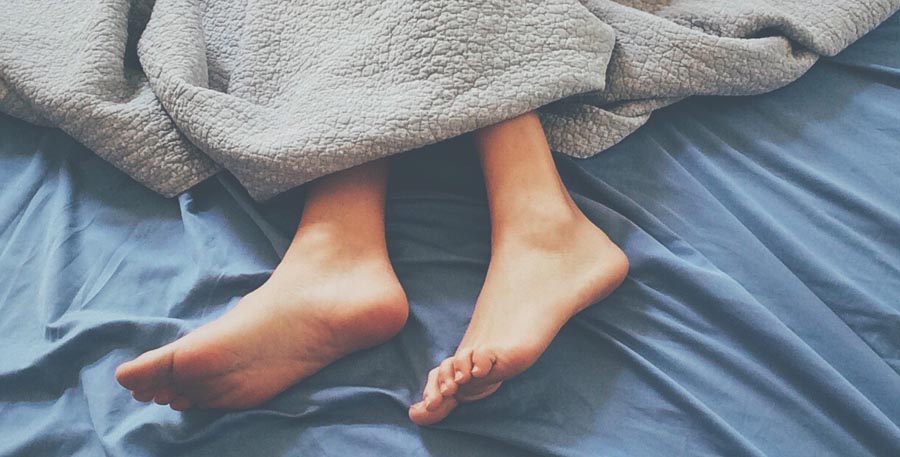
According to statistics, side sleeping is the way to go, with around 60% of adults preferring to sleep on their side.
And this isn’t a huge surprise as there are so many benefits associated with such a position.
But can you sleep on your side in a hammock?
Many people find comfort when sleeping in a hammock because it sways and the material molds to your body. And since side sleeping is considered a good position for slumber, the two must go together, right?
Let’s discuss it in detail.
Many studies have found that sleeping on the side is better because it promotes better airflow and improves digestion. The majority of people prefer side sleeping too. And if you are a side sleeper, you would prefer to do so in the hammock as well. It may not be as simple as sleeping on your back but it can be done with some tricks, such as lying diagonally before turning on your side.
What Is the Best Position for Sleeping?

Everybody knows that sleep is necessary. If you notice, you get cranky when you don’t get enough sleep. You need between seven and nine hours of sleep to rejuvenate.
Getting enough sleep has the following benefits:
- Better brain performance
- Reduced stress
- Improved mood
- Lower risk of weight gain
- More energy
- Lower risk of health problems
- Reduced risk of depression
- Stronger immune system
Sleep position matters when you’re trying to get the optimum amount of sleep.
The best sleeping position is the one that brings you the most comfort, and many have said they prefer to sleep on their side.
But let’s take a look at the various sleeping positions and how each can affect a person’s slumber.
Side Sleeping
Sleeping position is a matter of preference and many adults choose to sleep on the side. Experts say it is also the best sleeping position.
Here are the reasons why:
1. It Reduces the Risk of Sleep Apnea
Sleep apnea is a condition where breathing stops in the middle of sleep and restarts again. It can prevent the body from getting enough oxygen.
But when you are sleeping on your side, your airway is always open, allowing you to breathe easier.
2. It Reduces the Likelihood of Snoring
Snoring can disturb other people’s sleep. It happens more often when people sleep on their backs rather than on their sides.
According to experts, when you sleep on your back, the tongue can easily fall back on your throat, which prompts snoring.
It’s also worth mentioning that loud and frequent snoring is a symptom of sleep apnea.
3. It’s Good for the Guts
Sleeping on the side can improve digestion because the stomach stays below the esophagus.
Stomach issues like bloating, constipation, and other gastrointestinal problems will be prevented. Acid reflux or heartburn are likewise avoided.
4. It Promotes Better Brain Health
Sleep is important in waste disposal activity in the brain to remove toxic debris. Sleeping on the side improves the process as it allows faster waste removal.
5. It Is Linked to Improved Maternal and Fetal Health
Pregnant people find it better to sleep on their side, which is also the better option because it is easier for the heart to pump blood when in this position.
Stomach Sleeping

Some may find it more comfortable to sleep on their stomach. It’s not the most popular sleeping position, though, as only 10% prefer it.
Doing so has a couple of benefits:
- It presses down your stomach, which forces the gas out and keeps the digestion process active;
- It reduces snoring since it keeps the airway open.
Unfortunately, there are more drawbacks to sleeping on your belly.
You are prone to experience back, shoulder, and neck pain because of the position. Your body will press down the mattress, which would put stress on your back.
And since you have to turn one side of your head to breathe, it will put a strain on your neck too. Plus, with your face pressed on the pillow, it stretches and compresses the skin, which could lead to wrinkles.
Spine misalignment is also a possibility as your body sinks into the mattress because of the weight.
Back Sleeping
For some people, it is much easier to sleep on their backs.
Such a sleeping position has its own set of pros and cons.
For example, it is good for spine alignment, but only if you have a firm mattress. The position also helps distribute your body weight evenly.
You don’t have to worry about wrinkles, too, since your face will not be pressed on the pillow.
However, it is the worst position for snorers because the tongue could easily block one’s airway. It may even lead to sleep apnea.
The position is also problematic among people suffering from acid reflux.
Now that we have the sleeping positions figured out, let’s tackle the main question…
Can Side Sleepers Use a Hammock?

If you enjoy sleeping in a hammock but then you’re a side sleeper, a logical question is: Can I side sleep in a hammock?
It seems unnatural to sleep on your side in a hammock because it seems to be meant for back sleepers, who would just lie down and fall into the material.
Fortunately, side sleeping is possible in a hammock. But you have to employ some tricks to make it easier.
Sleeping on your side is healthy, and so is sleeping in a hammock because it is comfortable and it provides good support for the body.
Tips on How to Sleep on Your Side in a Hammock
Don’t let the hammock stop you from sleeping in your favored position. Check out what you can do so you can sleep on your side in a hammock:
1. Lay Diagonally in the Hammock
You can start by lying diagonally on the hammock and slowly turning to your side.
2. Choose the Right Type of Hammock
Not all hammocks are ideal for side sleeping. The ideal hammock has to be large because rolling to your side on a small one may result in a fall.
A long hammock is preferred, so you can straighten your body and move your head closer to the edge. This will give your neck better support as the edge is sturdier.
A hammock with a large width can also wrap your body firmly, avoiding too much movement while you are on your side.
And whilst we are talking about it, can you sleep on your side in a camping hammock?
Absolutely!
Camping hammocks or tent hammocks are among the best materials to sleep in as a side sleeper because they can completely mold your body.
3. Don’t Move Too Much
While you are already in the hammock on your side, try not to move too much. If you do, you could easily get out of position and fall out of the hammock.
4. Use Pillows
Support yourself with pillows. You can use a pillow as neck support and hug one to keep you in place on your side.
Final Thoughts
Good news for all side sleepers who also enjoy sleeping in hammocks–they can intersect! You can absolutely sleep on your side in a hammock.
Sleeping in hammocks can be fantastic because it promotes deep sleep. You get better sleep because a hammock can lull you to sleep. After all, it is snug and the movement is relaxing.
It is complemented by the fact that side sleeping is better for your breathing, digestion, and brain health.
Don’t forget the pillows to optimize sleeping on your side in a hammock!

